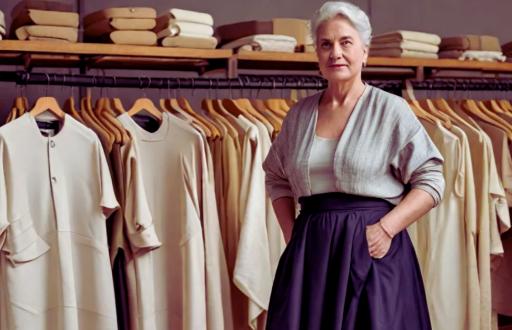Top Sustainable Fashion Brands to Know
The fashion industry, a behemoth of creativity and commerce, has long cast a considerable shadow on our planet. From resource-intensive production processes to the relentless churn of fast fashion trends, its environmental impact is undeniable. However, a shift is occurring, a burgeoning consciousness within the industry and among consumers demanding a more sustainable approach. This burgeoning movement has given rise to a new breed of brands, dedicated to minimizing their footprint while delivering stylish and ethically produced garments. Navigating this eco-conscious landscape can be daunting, so we’ve compiled a list of top sustainable fashion brands to know.

One cannot discuss sustainable fashion without acknowledging the myriad definitions of the term itself. It’s a multifaceted concept encompassing various practices, from using organic and recycled materials to ensuring fair labor practices and minimizing waste. Some brands prioritize circularity, designing clothes for disassembly and reuse, while others focus on reducing water consumption or carbon emissions. This intricate web of considerations is what makes identifying truly sustainable brands a complex, yet crucial endeavor.

Among the pioneers of sustainable fashion
Is Patagonia. Known for its commitment to environmental activism, Patagonia uses recycled materials extensively and has a robust fair trade program. Their dedication extends beyond manufacturing, actively supporting grassroots environmental organizations. This holistic approach, from sourcing to advocacy, sets a high bar for the industry.
Another noteworthy brand is Eileen Fisher. With a focus on timeless designs and high-quality materials, Eileen Fisher promotes a philosophy of buying less and buying better. They also have a take-back program, allowing customers to return old clothes for recycling or resale, promoting a circular economy. This forward-thinking approach tackles the issue of textile waste head-on.
Beyond these established names, a wave of smaller, independent brands is making significant strides in sustainable fashion. Consider brands like People Tree, a fair trade pioneer, or Reformation, known for its use of sustainable fabrics and transparent supply chains. These brands demonstrate that style and sustainability can coexist harmoniously. The emergence of these smaller players adds a dynamism to the scene, pushing the boundaries of what is possible within sustainable manufacturing.
Choosing sustainable fashion isn’t just about selecting specific brands; it’s about shifting our consumption habits. It’s about valuing quality over quantity, investing in durable pieces, and considering the lifecycle of our clothing. This paradigm shift requires a collective effort, from designers and manufacturers to consumers. The future of fashion hinges on this shared responsibility.
One cannot discuss sustainable fashion without acknowledging the myriad definitions of the term itself. It’s a multifaceted concept encompassing various practices, from using organic and recycled materials to ensuring fair labor practices and minimizing waste. Some brands prioritize circularity, designing clothes for disassembly and reuse, while others focus on reducing water consumption or carbon emissions. This intricate web of considerations is what makes identifying truly sustainable brands a complex, yet crucial endeavor.
Among the pioneers of sustainable fashion is Patagonia. Known for its commitment to environmental activism, Patagonia uses recycled materials extensively and has a robust fair trade program. Their dedication extends beyond manufacturing, actively supporting grassroots environmental organizations. This holistic approach, from sourcing to advocacy, sets a high bar for the industry.
Another noteworthy brand is Eileen Fisher. With a focus on timeless designs and high-quality materials, Eileen Fisher promotes a philosophy of buying less and buying better. They also have a take-back program, allowing customers to return old clothes for recycling or resale, promoting a circular economy. This forward-thinking approach tackles the issue of textile waste head-on.
Beyond these established names, a wave of smaller, independent brands is making significant strides in sustainable fashion. Consider brands like People Tree, a fair trade pioneer, or Reformation, known for its use of sustainable fabrics and transparent supply chains. These brands demonstrate that style and sustainability can coexist harmoniously. The emergence of these smaller players adds a dynamism to the scene, pushing the boundaries of what is possible within sustainable manufacturing.
Choosing sustainable fashion isn’t just about selecting specific brands; it’s about shifting our consumption habits. It’s about valuing quality over quantity, investing in durable pieces, and considering the lifecycle of our clothing. This paradigm shift requires a collective effort, from designers and manufacturers to consumers. The future of fashion hinges on this shared responsibility.
Conclusion
The landscape of sustainable fashion is dynamic and ever-evolving. The brands mentioned here represent just a fraction of the innovative companies striving to create a more ethical and environmentally responsible industry. By supporting these brands and adopting more conscious consumption habits, we can collectively contribute to a more sustainable future for fashion. It’s a journey, not a destination, and every step counts.
FAQ
What is sustainable fashion?
Sustainable fashion encompasses practices that minimize the environmental impact of the fashion industry. This includes using eco-friendly materials, ensuring fair labor practices, reducing waste, and promoting circularity.
Why is sustainable fashion important?
The fashion industry has a significant environmental footprint, contributing to pollution, resource depletion, and climate change. Sustainable fashion offers a way to mitigate these impacts.
How can I identify sustainable brands?
Look for certifications like Fair Trade or GOTS (Global Organic Textile Standard). Research the brand’s materials, manufacturing processes, and social responsibility policies. Transparency is key.
Is sustainable fashion more expensive?
While some sustainable brands may have higher price points, the focus is often on quality and durability, which can result in long-term savings. Also, consider pre-owned options and clothing swaps as sustainable alternatives.
Where can I find more information on sustainable fashion?
Numerous resources are available online, including websites, blogs, and organizations dedicated to promoting sustainable practices in the fashion industry. A simple search for “sustainable fashion resources” will yield a wealth of information.






